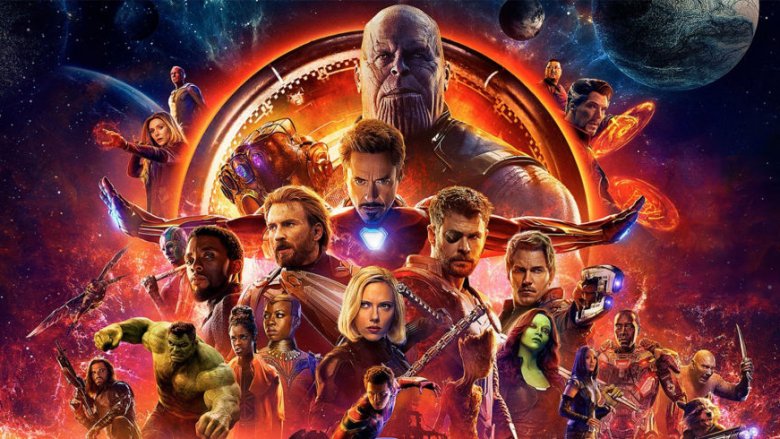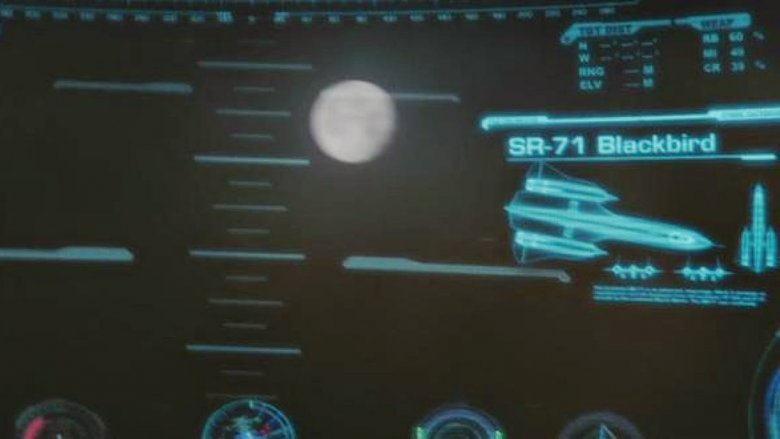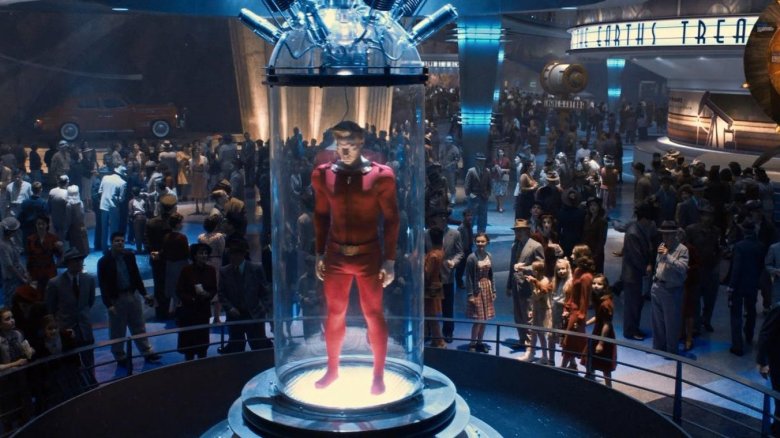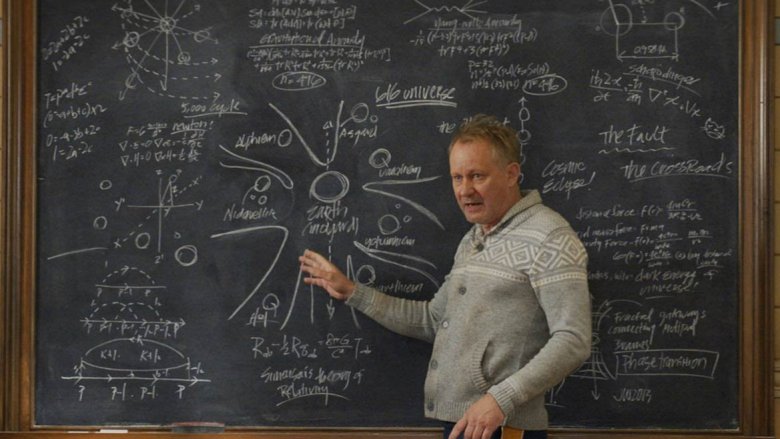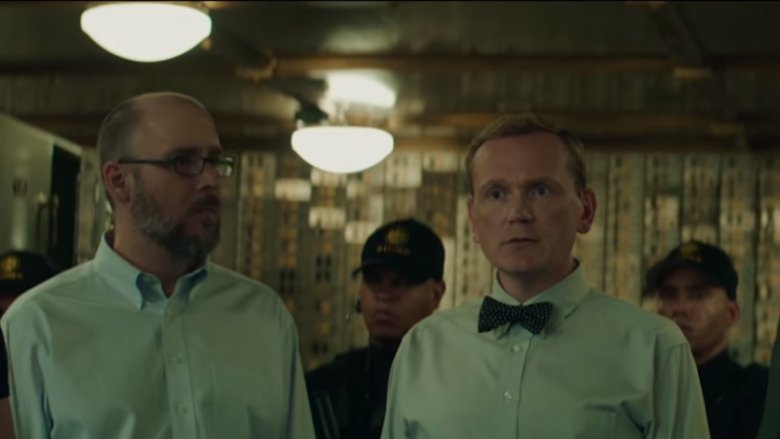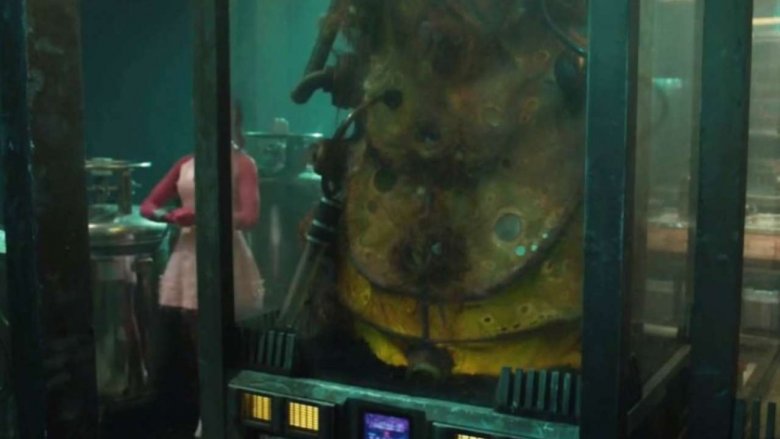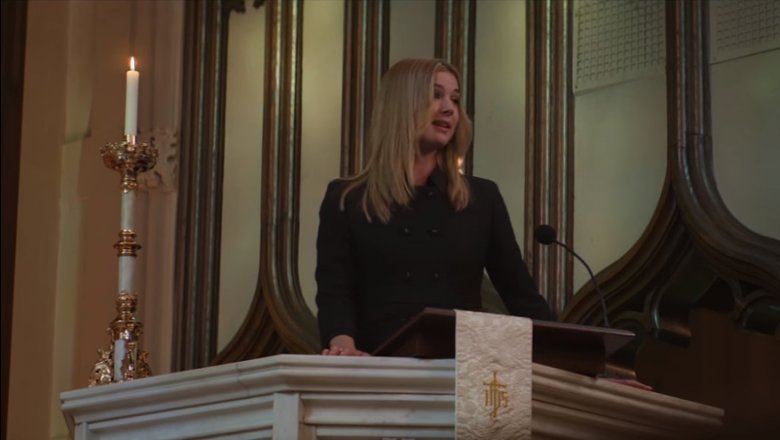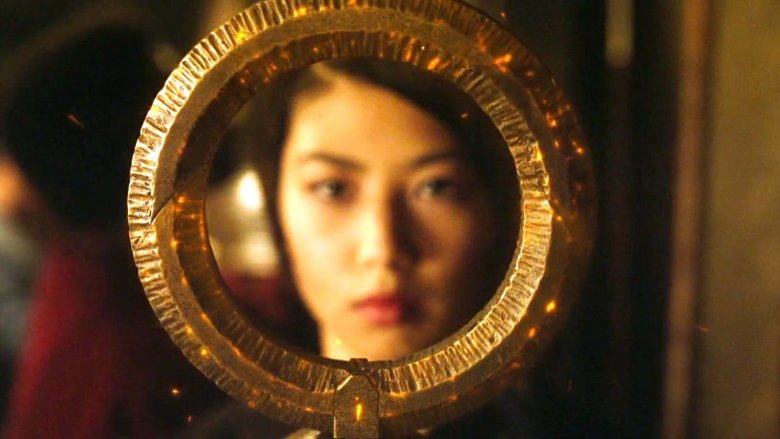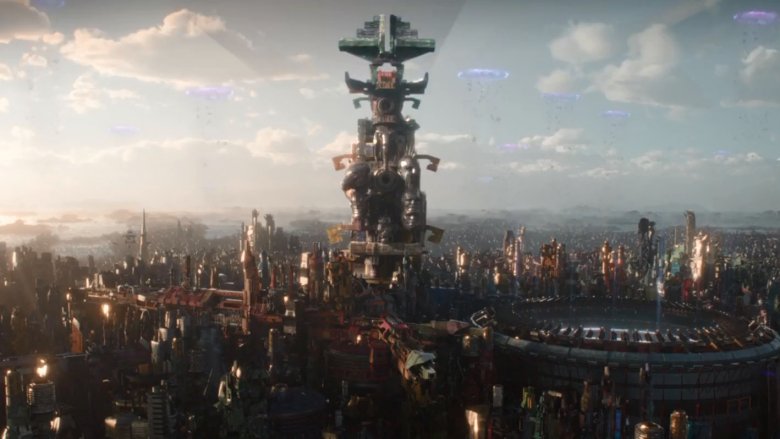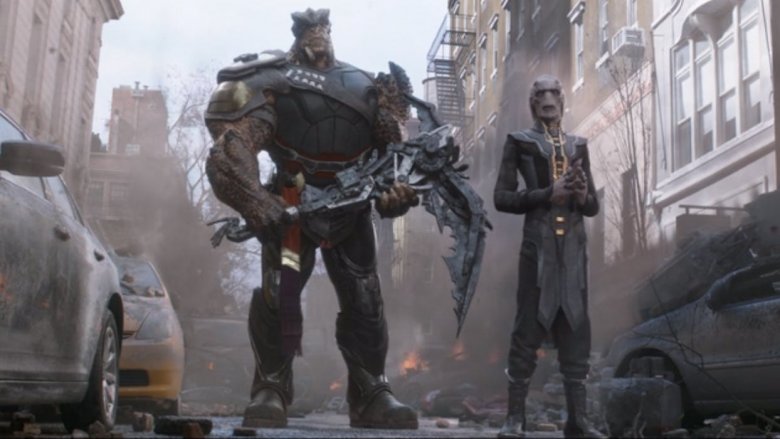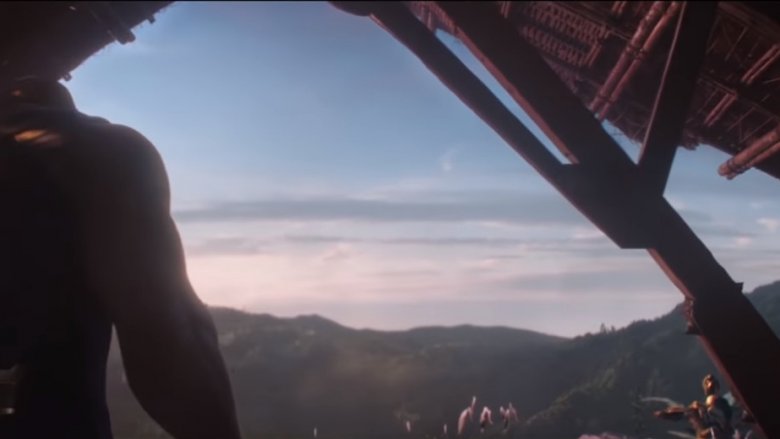The Best MCU Easter Eggs You Missed So Far
The Marvel Cinematic Universe produced 20 films over its first 10 years, brought in billions of dollars at the box office, made superstars of many of its cast members, and generally grew to dominate a vast swath of pop culture along the way. To say it's a detailed world would be an understatement. It's the most ambitious shared universe ever committed to film, full of links between individual movies, threads running through the whole overarching narrative, and tiny details you only catch on your fourth, fifth, or tenth viewing. That means it's a world packed with Easter eggs, and MCU fans have never stopped hunting for the best ones.
When thinking about MCU Easter eggs, the sheer number of hours available to watch means there are dozens to choose from, some very subtle and some more obvious than a Stan Lee cameo. With that in mind, it's almost impossible to list all of the best or hardest to find here, but we'll do our best. Next time you watch through the MCU, here are some Easter eggs you may have missed that you should definitely be on the lookout for.
A familiar plane
Though the Disney/Fox deal changed things, for years, the worlds of the Avengers and the X-Men have been famously kept separate on the big screen thanks to various movie rights deals. While the Avengers assembled at Marvel Studios, the Marvel Comics mutants had their own adventures over at Fox, but that doesn't mean there weren't any knowing winks exchanged.
For example, the scene in Iron Man in which Tony Stark conducts a test flight of his new armor for the first time, and decides to see just how high he can fly. He asks his A.I. assistant JARVIS what the altitude record is for a very specific plane: The SR-71 Blackbird. That's a real plane, of course, but it also has a place in Marvel Comics. The Blackbird was used as the model for the jet flown to missions by the X-Men, and has often been referred to as simply "the Blackbird" when it's not being called the X-Jet. Now, the film of course can't specify that Stark is referring to Charles Xavier's private super plane, but it was a nice nod in the direction of X-Men fans nonetheless.
Another Golden Age hero
Captain America: The First Avenger takes Marvel fans back to World War II, and the time when Steve Rogers not only became Captain America in fiction, but also when the character was dreamed up in real life. In doing so, it creates an invaluable atmosphere of patriotic pride and ambition, and that ambition reveals itself in particular during the Stark Expo scene, where if you look closely you'll see another classic Marvel character created back when the company was still Timely Comics. As Steve and Bucky are on their date, they walk past a glass display close with a costume in it that's labeled "Dr. Phineas Horton Presents The Synthetic Man." Phineas Horton is the scientist who created the original Human Torch, an android who eventually took on the name Jim Hammond, all the way back in Marvel Comics #1 in 1939. The character, who was initially kept in a glass cylinder much like the one in the film, remains an important foundational creation in the Marvel Universe, though he's never been seen as much as Cap or even his other Golden Age counterpart, Namor the Sub-Mariner. Still, this shot establishes that some version of him existed in the MCU at some point, so maybe one day we'll flash back again and get the full story of the synthetic man and his adventures.
A universe we know and love
The Marvel Cinematic Universe is a world unto itself, but it exists in the greater realm of Marvel Entertainment, which itself contains a vast multiverse of various worlds featuring alternate versions of characters and worlds. The MCU even has its own designated reality number: 199999. That places it within the greater Marvel multiverse, which means that whether we'll ever see it or not, there is a cosmic link between the cinematic versions of these heroes and villains and their prime continuity comic book counterparts. That link was further emphasized in Thor: The Dark World, when Dr. Erik Selvig (Stellan Skarsgard) laid out his understanding of reality on a giant chalkboard while in a mental institution. Among his other scribblings, including a map of the Nine Realms, he wrote one key phrase: "616 Universe." That number is the official designation of the main Marvel Comics universe, and whether Selvig discovered that world or just scribbled a random number down isn't clear, but it is clear that the filmmakers wanted us to see the connection.
A vital creator
When it comes to Marvel Comics creators appearing on the big screen, there's always going to be one name at the top: Stan Lee. There's good reason for that, but Lee is not the only Marvel luminary to pop up in the MCU at one point or another. There are actually several examples of this, including Thor writers Walt Simonson and J. Michael Straczynski emerging in that character's films, but one of the most important came in the background of a scene in Captain America: The Winter Soldier. As Alexander Pierce (Robert Redford) is questioning The Winter Soldier (Sebastian Stan), a team of handlers are standing around the room. One of them, seen on the left side of this image, is Ed Brubaker, an Eisner Award-winning comic book writer responsible for resurrecting Bucky Barnes as The Winter Soldier in Captain America #1 in 2005. Before Brubaker joined Captain America, Bucky had been dead for decades, and was long considered one of the rare comics characters who would never return from the grave. Without Brubaker, the MCU would be a very different place indeed, so it's nice to see him get a little moment here.
A sign of things to come
If you're looking for an Easter egg hunt that will take hours contained within one film, look no further than the Collector's (Benicio del Toro) hideaway on Knowhere in Guardians of the Galaxy. The man's massive treasure trove of artifacts and living specimens seems to go on forever, and if you're willing to be patient and liberal with the pause button, you're likely to notice quite a few interesting things. Among his finds are a Chitauri from The Avengers, a Dark Elf from Thor: The Dark World, Cosmo the Space Dog, and, of course, Howard the Duck. There's another find tucked away in that room, though, that could have massive implications for the future of the MCU. In the image above you can see a cocoon-like object that writer/director James Gunn later hinted was the gestation place of Adam Warlock, a character later further teased in a post-credits scene of Guardians of the Galaxy Vol. 2. As it turns out, the two objects might not be the exact same cocoon, but the visual cues were already there. Adam Warlock has massive cosmic implications for Marvel's future, so if he does show up at some point, we can tie it all back to this.
A speech for the ages
Some Easter eggs are so specific that you'll only recognize them if you carefully read one very specific comic book issue, and that's the case with this gem from Captain America: Civil War. At the funeral for the legendary Peggy Carter, her niece Sharon (Emily VanCamp) delivers the eulogy, and passes on some words of wisdom her aunt once shared with her. Sharon emphasized Peggy's advice in times of trial, when it's important to stick to your convictions, and said that Peggy told her when the world told her she was wrong when she knew she was right, she was supposed to "plant yourself like a tree," and when the world told her to move she was supposed to say "No, you move." It's a powerful moment, and for certain comic book readers it was made all the more powerful by the knowledge that it's a speech lifted largely from Amazing Spider-Man #537, a comic tying in to the original Civil War event in which a very similar speech is given by none other than Captain America. Screenwriters Christopher Markus and Stephen McFeely definitely did their homework.
Connecting to the small screen (sort of)
Some Easter eggs begin as an amusing idea, and then they just don't stick, either because the scenes don't really come together or because some other part of the universe is attempting to work with the same concepts. That was the case with one particular hidden gem in Doctor Strange, which has been semi-retconned by the events of Hulu's Runaways TV series. At various points in the film (including, mostly, in deleted scenes), we see glimpses of the Hong Kong Sanctum, where sorcerers work to guard that corner of the world from magical threats. Among them is a staff-wielding character named Tina Minoru, played by Linda Louise Duan. We only know her name because she's listed in the credits (she's never named onscreen), but Minoru happens to be the mother of Nico Minoru, one of the main stars of Runaways, who eventually wields her mother's staff (known as The Staff of One) herself. Of course, Tina Minoru was recast for Runaways, but it's still a nice touch.
Former champions
Some Marvel characters might not be ready for prime time yet, but they're still beloved by enough fans and filmmakers to make at least a brief appearance in the MCU. That's manifested itself in many ways, but perhaps none more grand than Thor: Ragnarok, when we see the Grandmaster's Palace on Sakaar for the first time. The towering structure is adorned with various shimmering statues depicting the heads of the great champions that fought in the arena in years past, and while the still-under-construction Hulk head might end up dominating the whole thing, the heads already placed there are particularly fascinating. They include Bi-Beast, Man-Thing, Ares (yes, even more mythologically inspired Marvel characters) and, of course, Beta Ray Bill, a longtime ally of Thor who fans have been hoping to see on the big screen for years. We may not see any of these characters actually living and breathing in the MCU anytime soon, but these statues were enough to let us know they exist, and that's a start.
A subtle Captain Marvel connection
Sometimes an Easter egg might not even be intended as a hidden gem for fans to find, but when fans latch on to something, it's hard to shake the feeling that everything is connected. In the weeks after Avengers: Infinity War hit theaters, MCU fans online started to notice something particularly interesting about the wardrobe choice of Cull Obsidian (he's the big guy on the left). Notice the sash dangling down from his waist? Well, at first glance that's just a colorful sash, but compare it to the costume color scheme of one Carol Danvers — a.k.a. Captain Marvel — and a connection begins to emerge. He's from space, she's spent a lot of time in space. He's in Infinity War, she's slated to show up in the sequel. Of course, it could just be a coincidence, but it's possible that these two have tangled before... or that they met once and he said "I love your outfit" and decided to borrow her look.
A humble farmer
Avengers: Infinity War is very loosely based on the 1991 Marvel Comics event series The Infinity Gauntlet, and while the plot differs significantly, the film bears many nods and winks to the text. For example, Bruce Banner crashes through the roof of Doctor Strange's Sanctum, echoing the moment when the Silver Surfer did that in the comics. Of all the moments that made Gauntlet fans particularly happy, though, one that really stands out comes in the film's very last shot, when Thanos sits down at his humble new home to "watch the sun rise on a grateful universe." As he walks to his seat, limping from his battle wounds but satisfied with the work he's done, if you look closely in the lower right corner of the shot you'll see something standing amid the crops growing there. It's a scarecrow made from his old battle armor. At the end of Infinity Gauntlet, Thanos gives up his quest for ultimate power after the battle, believing instead that he should lead a simple life. He takes up farming, and makes a scarecrow with his armor. It's two very different ways of arriving at the same image, but it's still a great reference.
